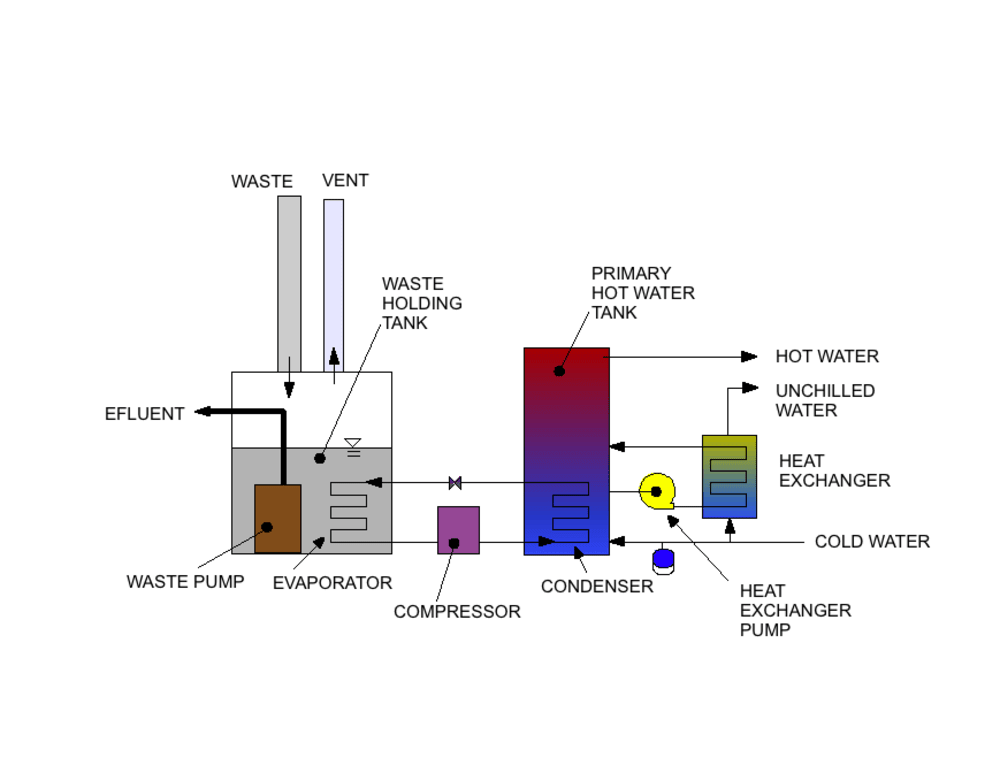Most residential buildings in the United States dispose of the waste water without any method for heat recovery. While controlling building heat losses through better insulated structures is part of standard construction, less is done to prevent energy loss through drainage plumbing. The U.S Department of Energy estimates that 235 billion kWh of hot water is discarded annually without heat recovery. The production of hot water accounts for 20% to 30% of the total residential energy use depending on location.
Efficient waste water heat recovery processes are commonly found in commercial and industrial applications where the savings in operation justify the initial investment. Most residential heat recovery systems on the market today are not efficient nor managed to make best use of the recovered heat. Lower-cost systems consisting of less efficient pass-through heat exchangers are used for partial heat recovery typically from a shower or washing machine.
While waste hot water contains most of the recoverable energy, cold waste water under 55°F is also a source that may be tapped. A heat recovery system processing the combined hot and cold stream has the potential to deliver the energy needed to produce residential hot water plus extra heat to remove the chill from incoming cold water. Producing unchilled water in the home has the potential to further conserve water and energy. Toilets using hot-cold mixers to prevent tank condensation may do away with such energy wasting feature and use unchilled cold water. Unchilled water may also be accepted for uses where the hot water would be allowed to run such as hand washing.
The attached process diagram includes a waste stream holding tank to retain waste water until heat is extracted. The holding tank has a waste/sewage pump, temperature, and level controls, and the heat pump evaporator coil. The heat pump extracts energy from the holding tank and transfers the heat to the primary hot water tank. A microprocessor control system monitors both the level and temperature of the holding tank maximizing heat extraction prior to discharging the cold waste water. The control system monitors the primary hot water tank temperature and is programmed to direct excess heat to other sources once the primary tank has reached the maximum setpoint. The heat exchanger pump operates during the heat extraction process to extend energy harvesting and at other times to help maintain the unchilled water supply in the 60°F to 70°F range. The smart heat management system may be integrated with other systems to extend total heat recovery if needed.
Todays high cost of energy creates an opportunity for a more effective residential waste water heat recovery and waste heat management system. To help lower the initial investment cost, the process can be pre-engineered and modularized in several sizes to accommodate for site specific requirements and total flow. The system can be constructed from standard off-the-shelf components typically used in residential applications.
Like this entry?
-
About the Entrant
- Name:Robert Clarke
- Type of entry:individual
- Software used for this entry:OpenOffice
- Patent status:none

